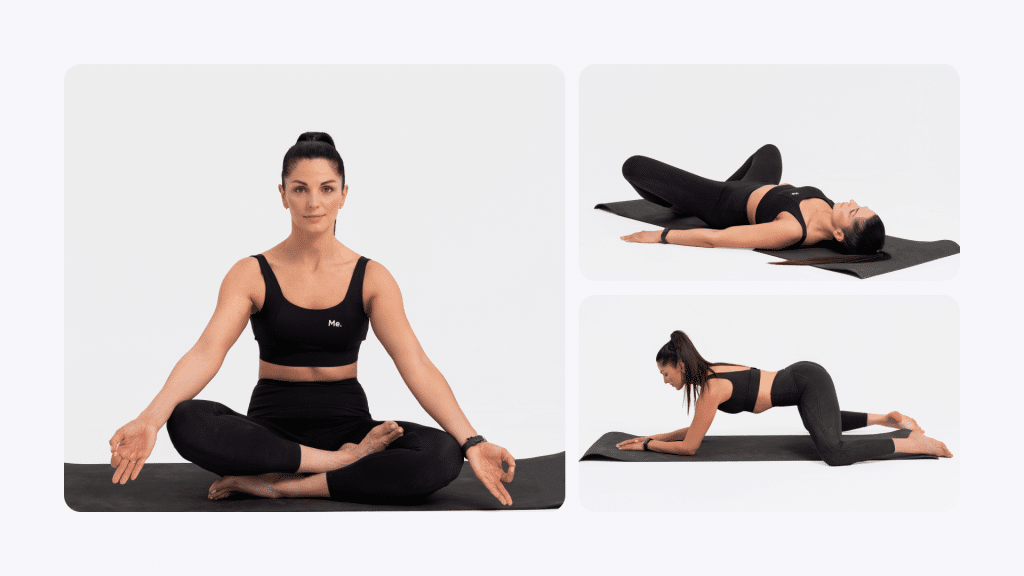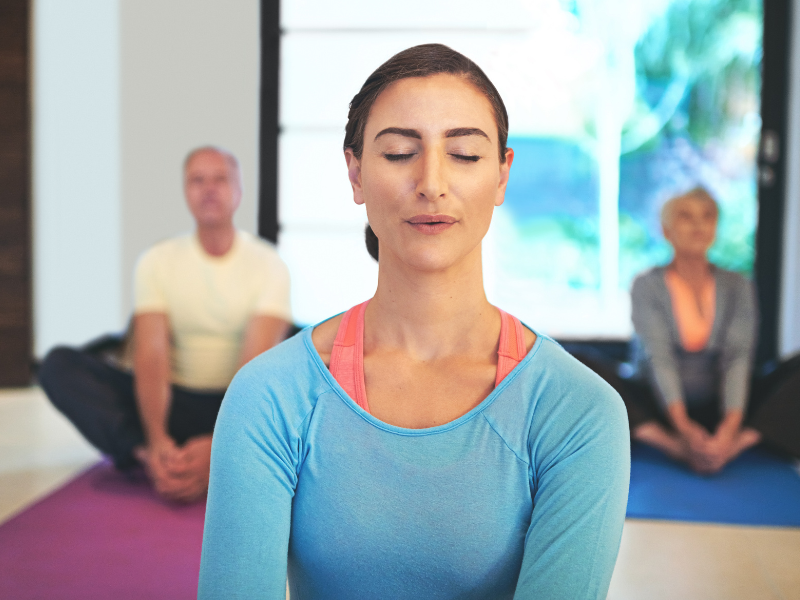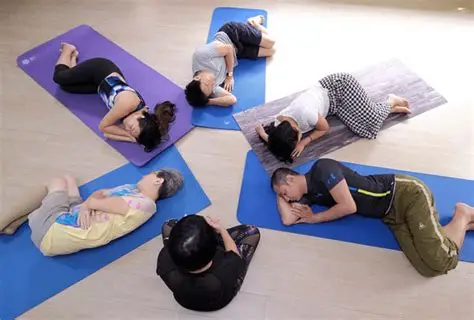
Ever caught yourself how worry can creep up on you quicker than your coffee pots percolate? For folks with packed schedules racing against deadlines, commutes, and never-ending tasks, that comforting jolt of adrenaline can strike before you even leave the house. The better news: you don’t need a one-hour meditation or an expensive yoga studio to get your calm back.
Trauma therapists and body experts concur tackling anxiety from the body can bring speedy relief. Whether you’re preparing for a high-stakes meeting or simply need to shed morning nerves, these lightning-fast, expert-approved techniques can get you back on track in seconds. Here is a toolkit of the most potent somatic exercises, ideal for anyone looking for less stress and more ease, no matter how hectic the schedule.

1. The ‘Voo’ Sound: Vibrate Away Stress
Visualize the ‘voo’ sound as an internal foghorn of your body. Trauma therapist and author Anita Phillips, Ph.D., promises this exercise to provide instant anxiety relief. Simply breathe in deeply, then slowly breathe out making a low ‘voo’ sound from your abdomen. As Dr. Peter Levine describes it, ‘the vibrations of our vocal cords stimulate the vagus nerve, which can help regulate the heart rate and reduce stress and promote relaxation.’ This procedure is so successful that a nurse working in a high-stress emergency room told Levine, ‘Our work is still hard, but it’s not so heavy anymore.’ The best part? You can do it while you’re waiting for your coffee to drip or when you stand in front of the microwave. Allowing the sound to vibrate against your body serves to loosen up old tension and ground you in the here and now. The vibrations activate the vagus nerve, engaging your body’s relaxation response.

2. Tension Release: Squeeze, Hold, Let Go
If you’ve ever wished you could wring out your stress physically, this is the one for you. Phillips suggests taking a deep breath, then tensing all of your muscles as you breathe out. Hold the tension for a few seconds, then breathe in and let it all go. It’s a type of progressive muscle relaxation that has been shown through research to cut anxiety and improve sleep. The trick is the contrast: ‘You want to breathe in calm, and when you breathe out, I want you to make everything tight,’ Phillips says. By intentionally tensing and then relaxing, you get your mind and body to reset. Bonus: It’s a fast fix you can do at your desk, in your car, or even while you brush your teeth.

3. Grounding Through Your Feet: Find Your Foundation
When anxiety has you feeling like you’re floating, grounding through your feet can ground you right back down. Dr. Linda Thai recommends standing or sitting with both feet flat on the ground, pushing down ever so lightly, and rocking forward and backward. Feel the pressure and support underneath you. This easy movement grounds you in the present and quiets churning thoughts. As Thai explains, ‘this helps clients reconnect with their physical foundation and can immediately decrease that floating anxiety feeling.’ Grounding from the soles of the feet engages your body’s sense of grounding, which is particularly useful during those stressful morning spikes.

4. The Butterfly Hug: Tap Into Calm
Soothing touch is a lifesaver for anxiety, and the Butterfly Hug is one of trauma therapists’ go-to techniques. Cross your arms over your chest, place your hands on your upper arms or collarbones, and alternate tapping right and left gently. Pay attention to your breath and slow down or increase the pressure to achieve a sense of comfort. This bilateral tap facilitates the balance of your nervous system and provides instant relief. It’s discreet enough to do at work or in a secluded area when you just want a swift emotional reboot. The Butterfly Hug can alter anxiety through self-touch and is particularly convenient for busy individuals who need relief in transit.

5. Shake It Out: Move and Release
At times, anxiety needs shaking off literally. Phillips recommends ‘shaking it out’ as part of your daily morning routine. Begin by shaking your butt, and then allow the motion to move up the length of your body. This fun technique has its basis in the somatic therapy philosophy of finishing what your body needs to release tension. Shaking, stretching, or swaying releases stored energy and lets your nervous system know it’s time to un-tighten. And it’s a wonderful justification to crank up your favorite tune and bust a move for a minute or so no dance lesson necessary.

6. Box Breathing: Instant Calm in Four Steps
Box breathing is a simple, structured breathwork technique that therapists and Navy SEALs alike believe. Inhale for four counts, hold for four, exhale for four, and hold again for four. Repeat for a few cycles. This method slows your heart rate and calms your nervous system in under a minute. Box breathing is easy to remember and can be done anywhere whether you’re stuck in traffic or prepping for a presentation.

7. The Physiological Sigh: One-Breath Reset
At peak stress, the physiological sigh is an instant reset. Breathe in normally through your nose, then tack on a second, quick inhale on top of it. Exhale slowly through your mouth. Repeat for a few cycles. Neuroscientist Andrew Huberman claims this as one of the speediest methods to shift your stress response down. It’s stealthy, efficient, and under a minute. Cyclic sighing can really bring down stress levels and is ideal for busy individuals who require a stealthy anxiety hack.

8. Pendulation: Shift From Tension To Ease
Pendulation, a method developed by Dr. Peter Levine, is about softly alternating between places of tension and places of ease in your body. Identify a region that feels tense, then shift your attention to a neutral or comfortable spot. Alternate back and forth for a few cycles. This exercise teaches your nervous system to transition between tension and relaxation, developing resilience with time. Pendulation creates balance and self-regulation, and so it is a very useful technique for those times when feeling anxious feels too much.

9. Self-Hug: Instant Comfort, No Equipment Needed
There are times when you just want a hug and you don’t need to wait for someone else to do it. Cross your arms over your chest and squeeze gently, focusing on the warmth and pressure. Breathe slowly and notice how your body responds. This quick self-hug signals safety to your nervous system and can melt away tension in seconds. The self-hug is a fast, accessible way to self-soothe, especially when you’re on the move or in need of a little extra support.
Anxiety doesn’t have to control your mornings or any portion of your day. With these lightning-fast, body-based exercises, you can take back calm in seconds, no matter how crazy life gets. The best thing about somatic exercises is that they’re so flexible: you can blend, combine, and modify them to suit your routine. Whether you’re humming a ‘voo’ in the kitchen, shaking it out before a meeting, or grounding through your feet on the subway, these tools are your secret weapon for stress relief. Here’s to starting (and ending) every day with a little more ease, one breath and one movement at a time.


